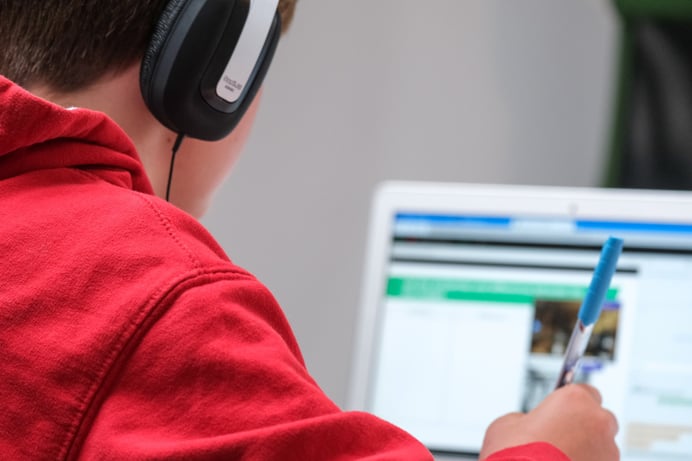By Devin Partida

The pandemic forced many students to switch to online courses. While virtual learning was a useful stopgap measure in the absence of in-person classes, certain topics proved very difficult to teach remotely, especially hands-on STEM subjects. For physical science, technology and engineering courses, in-person classes work best, but there’s still a place for online learning.
Courses Compatible With Online Platforms
Some STEM classes require little hands-on experience. Students can often learn math completely online as long as there are no physical models to interact with, such as in geometry or chemistry. The same is true for technology classes like coding, which are specifically designed to be completed on a computer.
But online lessons are poor substitutes for things like dissecting frogs, where tactile learning plays a huge role in understanding the topic. Looking at rock photos just doesn’t compare to taking a geology field trip. And for engineering students learning to build robots, a purely online class can’t replicate the experience of being in a lab with bins full of gears, wires and computer chips to choose from.
The Importance of Collaboration
STEM students often work on projects together in the classroom setting. Even when operating their own stations in a chemistry lab, most students will turn to each other for help, asking questions and giving feedback. This behavior is a crucial part of the learning process.
Online classes sometimes offer message boards or let students email each other, but these are rather formal interactions. They lack the spontaneity of turning to a classmate for a quick answer, and by the time the other student sends a reply, it’s often too late.
This lack of in-person interaction can have even greater ramifications for students with learning disabilities. A 2019 survey of K-12 public school teachers in the U.S. found only 60% believed digital learning tools foster collaboration between special needs students and their peers. Many students perform best when they have a tangible social support network.
Improving Online Classes
Online classes are certainly better than not attending school at all, and they’re especially valuable for students who have health problems or live in remote regions. Therefore, rather than doing away with online classes altogether, teachers should strive to improve the online learning experience.
The most useful way to improve online courses is to foster stronger collaboration between students. Resources like digital whiteboards let students work together and make comments in real time during brainstorming sessions. Group video calls allow students to raise their hands to ask for clarification, just like they would in a lecture hall. Video chatting also connects a face and voice to otherwise impersonal names.
One other way to improve the online learning experience is to integrate it with a hybrid curriculum. Students can spend most of the week learning remotely, but still participate in workshops and field trips to gain a better grasp of the subject and collaborate with other students. The hybrid approach can also help students who feel isolated in a remote classroom setting.
Another way to improve collaboration and reduce loneliness is to bring online courses into the physical classroom. Rural schools can offer advanced classes that would otherwise be unavailable by repurposing empty classrooms. Then, a facilitator can set up the screen, hand out assignments and manage student behavior while a lecturer teaches from a remote location. It’s the best of both worlds for online STEM students.
Improving the Learning Experience
There’s no one-size-fits-all solution to STEM education. Some students learn best remotely while others struggle with online classes. However, the best way to maximize the online learning environment is to promote greater collaboration, whether by using digital tools, hosting shared workspaces or using a hybrid curriculum. One way or another, STEM students will keep exploring the future of education.
Learn more about STEM solutions with our Educational Catalog
Download 2023 Higher-Ed Catalog
About the author: Devin@rehack.com

